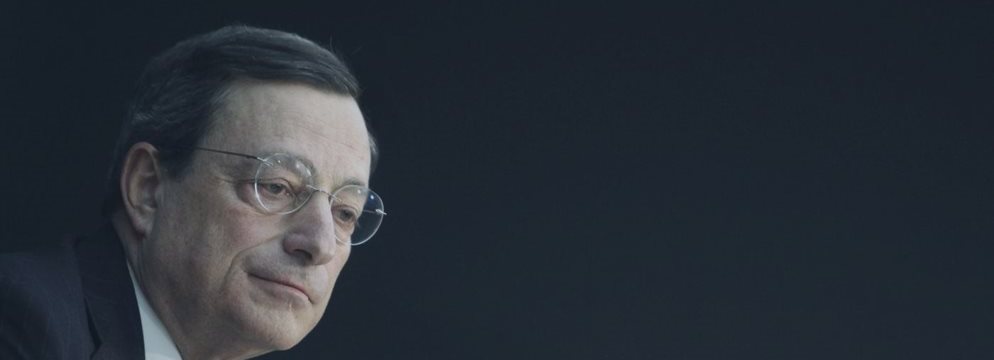Mario Draghi, the European Central Bank president, indicated in September that the latest measures to boost faltering eurozone inflation and get the economy moving again could increase the ECB’s balance sheet up by to €1 trillion. In reality, he doesn’t have full control of the ECB’s arsenal of credit-easing weapons.
As has become clear through banks’ relatively low desire to take up new ECB liquidity facilities, as well as the only limited volumes of asset-backed securities and covered bonds available for ECB purchases, the actual balance sheet increase will be much less than €1 trillion. The total stock of covered bonds that meet the ECB’s requirements is only €600 billion, from a stock of €1.2 trillion; purchasable ABS assets are only €400 billion out of a stock of €690 billion. It is not likely that the ECB can buy them all.
China has kicked off its fourth plenum, a major four-day Communist party summit. WSJ's Ramy Inocencio talks to Cheung Kong Graduate School of Business professor Li Wei on what to expect.
In his first year in office, which started on Nov. 1, 2011, Draghi said relatively little, but allowed observers to think he could achieve a lot. As he comes up for his third-year anniversary at the end of this month, the ECB president needs to reflect that, lately, the opposite has been true. Speaking more, but achieving a lot less, can wound the ECB’s credibility.
As other European central bankers say, Draghi is increasingly straying into areas over which he has no control, such as lecturing European heads of government on the need for structural and fiscal reform. That can only be a sign that he has his back to the wall.
Draghi’s finest hour was on July 26, 2012, when he famously announced in London, in a partly improvised statement, “Within our mandate the ECB is ready do whatever it takes to preserve the euro EURUSD, +0.12% .”
This was essentially a well-timed bluff, when peripheral European debt was under siege from hedge funds, to counter the pessimists and bring down weaker countries’ bond yields from panic levels that seemed to threaten member states’ solvency and spell the euro’s demise. Some market participants hope that Draghi could pull off a similar trick early next year with full-scale quantitative easing throughout the euro area.
But there are many reasons why, compared with his position in summer 2012, Draghi now has far less opportunity for a similar psychological breakthrough.
First, the debtor-creditor balance in monetary union has become badly skewed. Debtors hate deflation and want inflation, creditors see things the other way around. The International Monetary Fund’s data base on countries’ international investment positions makes alarming reading. Germany’s net foreign-credit position rose to 48.3% of gross domestic product in 2013 from 34.0% in 2009, the Netherlands’ to 46.2% from 16.7%. Italy’s net foreign-debt position increased to 29.5% from 26.6%, Spain’s to 98.2% from 93.8%, France’s (perhaps the most worrying shift) to 17.0% from 9.4%.
Second, Draghi’s guns for using the facility that grew out of his July 2012 announcement — the unused outright monetary transactions program — have been spiked, since the German constitutional court has declared it illegal and the European Court of Justice (where a first hearing took place on Oct. 14) is unlikely to bring about a speedy clarification.
The spreading of “reform fatigue” around the eurozone, seen in particular by hostility in Rome and Paris to European straitjackets on budget deficits and opposition to Berlin’s plans for a balanced German budget next year, anyway means that the fundamental condition for the OMT, further austerity policies in recipient states, cannot be fulfilled.
Third, the fall in interest rates since Draghi’s July 2012 announcement greatly limits the opportunity for profitable ECB intervention to curb excessive selling of debt. Spanish government 10-year debt in euros, despite some nervousness last week, is still yielding only 2.16%, slightly below the 10-year U.S. Treasury bond rate of 2.21% in dollars — despite expectations that the euro is likely to fall. The notion that prices are relatively high applies to the ABS and covered bond markets too.
Fourth, the Bundesbank and its allies in Germany and beyond are fighting full-scale QE.
Political, legal, financial market and academic opposition, often voiced by highly disparate bedfellows, has been fused into a common cause. Chancellor Angela Merkel was badly weakened by her failure to hang on to her Free Democrat coalition partners in last September’s general election. Her support for Draghi’s OMT in 2012 was not because she favors unconventional monetary policies, but because he let her off the hook by obviating the need for more parliamentary funding for debtor states. That benevolent constellation is unlikely to return.
Fifth, the most virulent debtor in the euro area (although not the biggest in absolute terms), Greece, has taken a monumental gamble by declaring that it wishes to escape the shackles of IMF- and EU-imposed austerity and rely on the capital market for government funding next year. The markets’ response was frosty — a rise in Greek bond yields to above 8%. Last week’s bout of eurozone nerves is unlikely to be the last.
More alarms and standoffs — this time involving the largest euro members, Germany, France and Italy — are likely in coming months.



